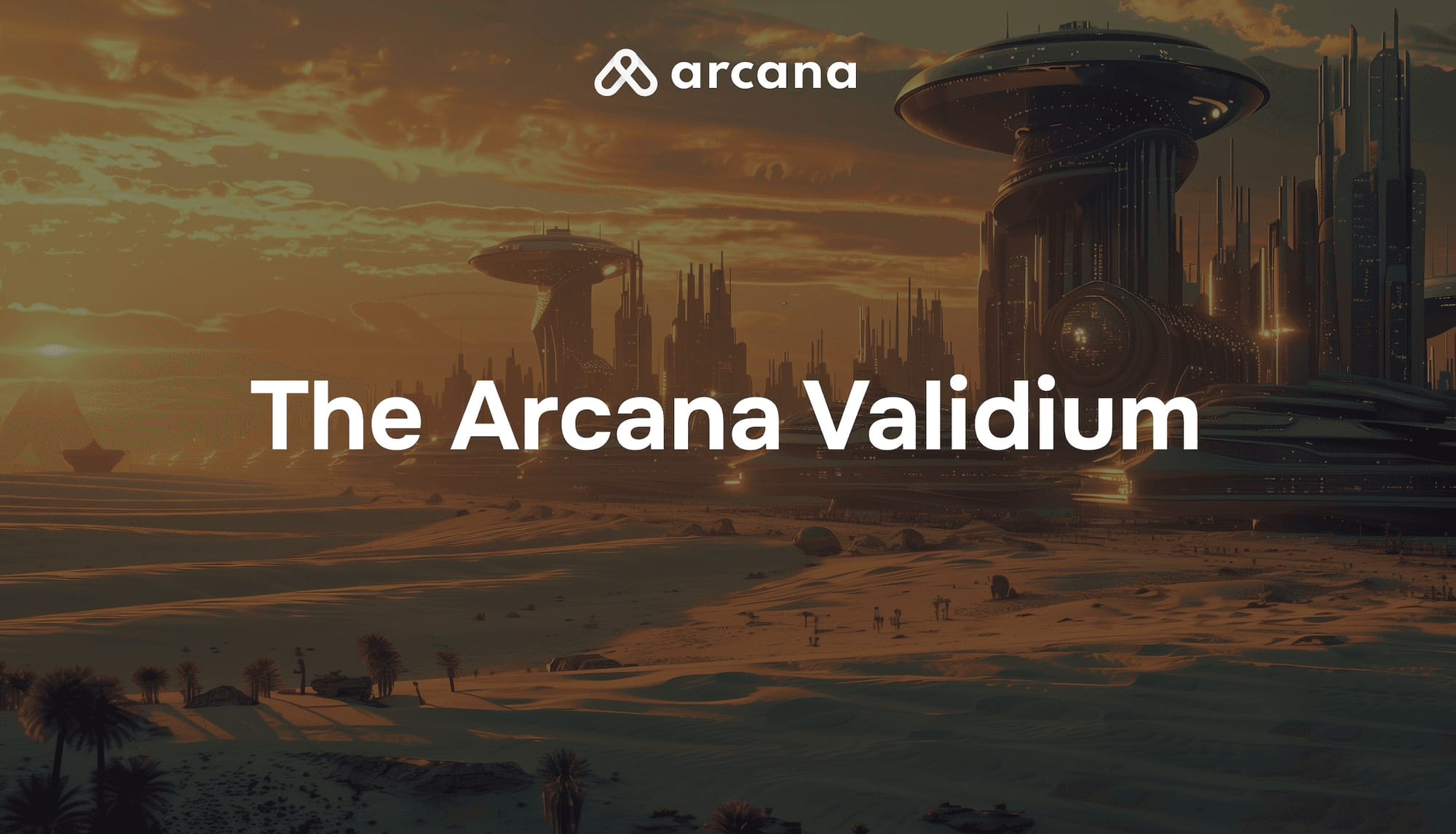Behind the Scenes: Developing Arcana Network's Validium Infrastructure
Arcana Network reveals the method behind the magic - a deep dive into constructing their robust Validium infrastructure. Learn how they balanced decentralization, security, and scalability in their groundbreaking blockchain.

A Snapshot of Our Current Infrastructure
Arcana's core service is Arcana Auth, which provides Web3 authentication and Wallet as a service. At its heart lies a cutting-edge cryptographic implementation of an asynchronous distributed key generation scheme.
In its current form, Arcana Auth operates as a distributed network comprising nodes managed both by the Arcana Foundation and independent node providers. These nodes are equipped with custom, in-house software enabling them to perform independent computations and data storage essential for the service's functionality. The nodes use Tendermint to ensure consensus in these computations, leveraging a Byzantine Fault Tolerant consensus algorithm.
Addressing Limitations: Goals for the Desired state
As we envision the future of Arcana Network, we must address certain limitations in our current design. Below, we outline key shortcomings that we aim to overcome in our desired state:
- Inability to adjust the size of the node set: Currently, we cannot add or remove validators without affecting network quality and capability. This limitation restricts the overall degree of decentralization of the network.
- Lack of node incentivization: Presently, nodes aren't incentivized by the protocol for their work or behavior that benefits the network. Likewise, there are no disincentives for nodes exhibiting poor performance or engaging in malicious behavior. This lack of incentive alignment poses the risk of an underperforming network.
We explore key aspects of our desired state, aiming to create a network that not only meets current needs but also anticipates future challenges and opportunities. Hence, naturally, a desired state for the network is when we
- Permissionless addition of new nodes: Enabling new nodes to join the network seamlessly promotes decentralization, enhancing its resilience and inclusivity.
- Permissionless removal of existing nodes: Allowing nodes to exit the network gracefully, whether due to underperformance or voluntary departure, ensures the network remains dynamic and adaptable.
- Native incentivization and disincentivization: Implementing protocols that inherently reward nodes for their contributions and penalize misconduct fosters a fair and sustainable ecosystem where participants are appropriately compensated for their efforts.
This is done to improve the throughput and security of the network. The goal is also to optimize costs for all the stakeholders in the network.
What and Why Validium?
First, what is a Validium, and how did it come about?
Scaling Ethereum has been a vital pursuit. This birthed Layer 2s or L2s, with their unique design of moving computations off-Ethereum, which would help scale Ethereum and reduce transaction costs. Rollups are a subset of L2s that rely on the “parent” chain for security and availability. Rollups submit proofs of off-chain computations to the parent chain for verification or challenge (depending on the rollup type). Optimistic rollups submit fraud proofs that need to be challenged during a specific challenge period. zk-Rollups submit a zk-proof to the parent chain and are instantly verified; no challenge period is needed. Rollups also submit transaction data to the parent chain for data availability.
A Validium is like a zk-rollup that produces a zk-proof but uses an external layer (not a parent chain) for data availability.
We chose to be a Validium for the following reasons:
- The Arcana Network is not meant to be used for general-purpose computations and for a developer audience to deploy smart contracts to achieve some business objectives or functional goals. It is meant to serve the very specific services that Arcana hopes solve specific use cases for developers.
- We wanted the flexibility to implement specific protocols, algorithms, or functionality in any language we choose without being limited by what EVM-based smart contracts afford.
- We wanted to ensure high throughput to afford users the best user experience and also the earliest possible finality.
- Finally, we wanted to be able to control most of the Validium stack so that we would not rely upon third parties when we wanted to make upgrades or extend our service offering.
The Validium design caters to all these needs, and with the support of our partners, we are due to launch the Arcana Network validium testnet in the coming weeks.
About Arcana Network
Arcana Network is a UX-focused Validium app chain dedicated to improving Web3 UX with a suite of products for developers and users. Its offerings include Arcana Auth for seamless user logins and web3 wallets on dApps, Arcana Gasless for frictionless Web3 transactions, and SendIt for simplified crypto transfers.
By addressing challenges like user onboarding, complex user interfaces, and transaction costs, Arcana is fostering a more user-friendly and inclusive web3 ecosystem
Stay updated through our communities for real-time updates, insights, and essential announcements
Official Links: Website | Telegram | Twitter | GitHub | Discord |

